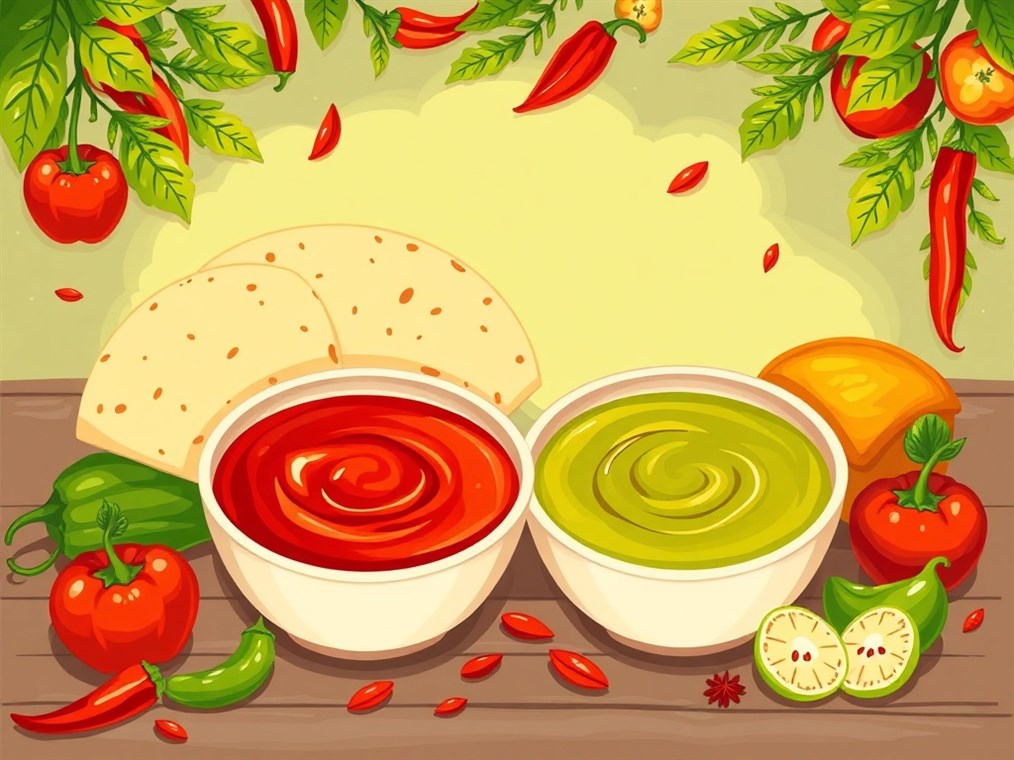Red vs. Green Enchilada Sauce: Which One Kicks Harder?
Enchiladas. Just the word conjures up images of warm tortillas smothered in delicious sauce, right? And when it comes to enchilada sauce, you’ve basically got two main contenders: red and green. But which one brings the real heat? It’s a question I get asked all the time, and honestly, the answer isn’t as simple as you might think.
See, it’s not just about the color.
The big difference boils down to what goes into each sauce.
- Red Enchilada Sauce: Think dried red chile peppers. Guajillo, ancho, New Mexico – these are the usual suspects. They get a little spa treatment – rehydrated, you know? – then they’re blended up with garlic, cumin, oregano, and simmered until they’re singing with flavor. Sometimes, folks even toss in tomatoes for extra richness.
- Green Enchilada Sauce: Now, this is where it gets zesty. We’re talking tomatillos (those little Mexican husk tomatoes!), plus green chiles like jalapeños, serranos, or poblanos. Roasting them first? Oh yeah, that’s the secret. Then, blend it all up with cilantro, onions, garlic, and spices. The result? A tangy, vibrant sauce that just screams “fresh.”
Okay, so which one’s hotter? Well, hold on a sec…
The truth is, it really depends on the peppers.
- Red Sauce Showdown: Red sauce can definitely pack a punch, especially if they throw in some of those fiery chile de árbol peppers. We’re talking potentially 15,000 to 30,000 Scoville units! But, a lot of times, they use milder chiles like guajillo or ancho. So, it’s not always a guaranteed inferno.
- Green Sauce Gamble: Don’t underestimate the green! Sure, tomatillos bring a bit of sweetness, but a handful of serranos or even jalapeños can turn that innocent-looking sauce into a sneaky firebomb.
Speaking of fire, ever heard of the Scoville Scale?
Back in 1912, some clever pharmacist named Wilbur Scoville came up with a way to measure how spicy peppers are. He called them Scoville Heat Units (SHU). The higher the number, the more your mouth’s gonna burn!
Here’s a little cheat sheet:
- Bell pepper: 0 SHU (basically, zero heat)
- Anaheim pepper: 500-2,500 SHU (a little tingle)
- Poblano pepper: 1,000-2,000 SHU (mild, but flavorful)
- Jalapeño pepper: 2,500-8,000 SHU (now we’re talking!)
- Guajillo chile: 2,500-5,000 SHU (a nice warmth)
- Serrano pepper: 5,000-15,000 SHU (watch out!)
- Chile de árbol: 15,000-30,000 SHU (serious heat)
- Cayenne pepper: 30,000-50,000 SHU (you’ve been warned)
- Habanero pepper: 100,000-300,000 SHU (enter at your own risk!)
But wait, there’s more! It’s not just the type of pepper.
- Seeds and Stuff: Those little seeds and membranes inside the peppers? That’s where the capsaicin (the stuff that makes you sweat) hangs out. Take ’em out, and you’ll tame the heat.
- Roast ‘Em Up: Roasting peppers can deepen their flavor, and sometimes, it even mellows out the spiciness a bit.
- Cooling Agents: Got a sauce that’s a little too fiery? Dairy, avocado, a squeeze of lime – these are your friends. They’ll help cool things down.
So, what’s the bottom line?
It all comes down to what you like.
- Craving smoky, earthy flavors with a potential kick? Go red.
- Want something tangy, zesty, and fresh? Green’s your go-to.
And hey, if you’re feeling adventurous, why not order your enchiladas “Christmas style”? That’s both red and green. Best of both worlds, right? You might just find your new favorite combo.

